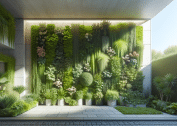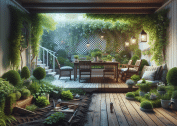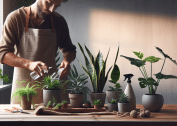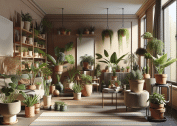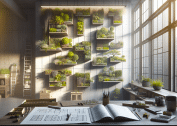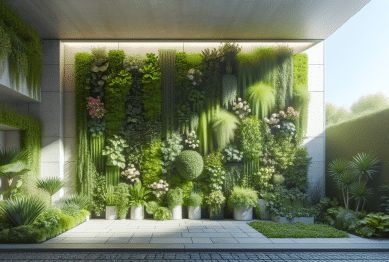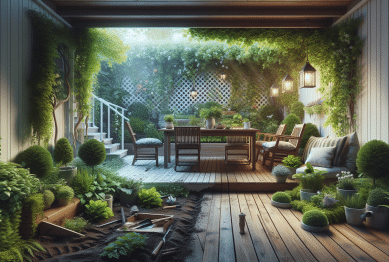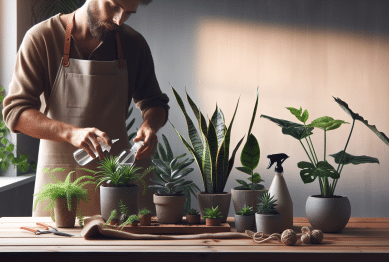The homesteading foodscaping trend is taking gardening to a whole new, stylish level. It’s not just about growing food—it’s about weaving edible plants seamlessly into aesthetic landscapes that bloom with beauty and purpose. In 2025, more homeowners are embracing this trend as a way to combine self-sufficiency with outdoor design that supports ecology, wellness, and connection.
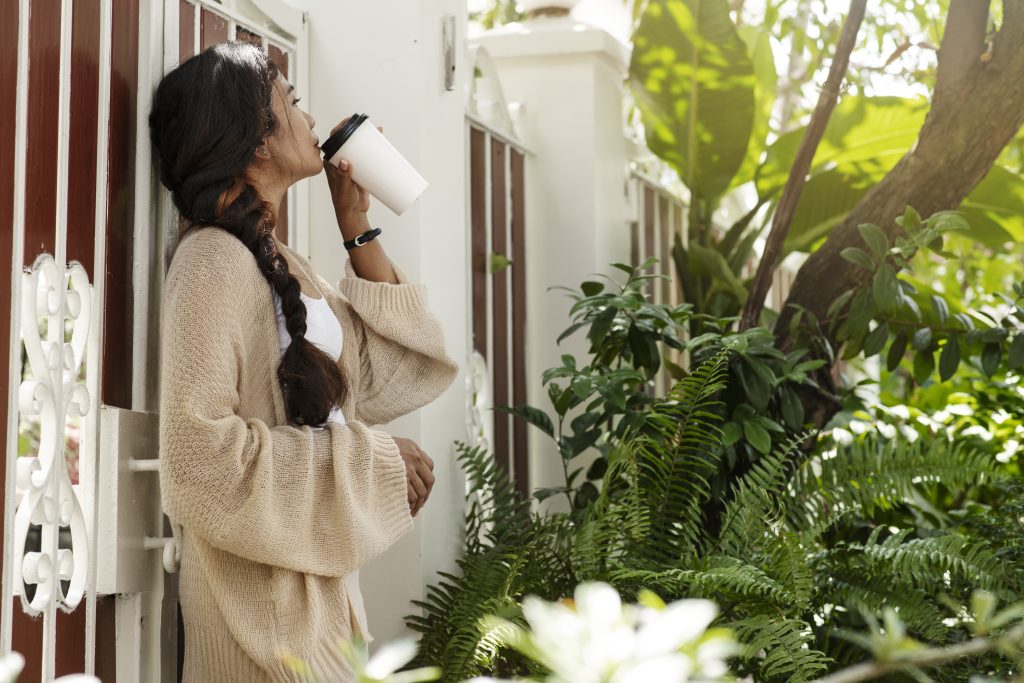
1. Why Homesteading & Foodscaping Are Shaping 2025 Gardens
The gardening world is evolving. Gone are the days when vegetable patches were tucked away in the back corner of the yard while flowers dominated the visible landscape. Today, the boundaries are blurring, and people are mixing the edible with the ornamental to create spaces that are both beautiful and functional. This change is driven by several key factors:
- The rise of mini-farms and self-sufficient yards
Homeowners, especially in suburban areas, are transforming their lawns into mini-farms. Raised beds, fruit trees, chicken coops, and even beehives are becoming more common. This shift is fueled by rising grocery prices, a desire for fresher food, and the growing appeal of sustainability. - Edible landscaping meets aesthetics
Foodscaping is about blending fruits, herbs, and vegetables into traditional landscaping. Picture a front yard where flowering chives and purple basil accent roses, or where blueberry bushes double as ornamental hedges. It’s functional beauty. - Aesthetic meets resilience
The focus is not only on looks but also on climate adaptability. Drought-tolerant and pollinator-friendly plants are replacing traditional bedding plants. These choices support biodiversity while cutting down on maintenance and water costs.
2. How to Design Your Homesteading Foodscape: A Step-by-Step Guide
Creating a homesteading foodscaping garden is both art and science. The design must balance productivity with visual appeal while keeping the space practical for everyday use. Here’s a step-by-step approach:
Step 1: Define Your Goals & Constraints
Before planting, decide what role you want your foodscape to play. Do you want a steady supply of herbs? Are you hoping to reduce grocery expenses by growing staple vegetables? Or are you simply aiming for beauty with a touch of practicality?
Other considerations include:
- Your local climate and soil conditions.
- How much time you can realistically commit to garden care.
- Regulations or neighborhood guidelines that might restrict certain types of planting or structures.
Step 2: Map and Layer Your Space
A good design starts with observation. Look at the sunlight, wind direction, and existing soil. Map out your yard and sketch potential beds, paths, and structures. Layering is key—tall fruit trees can provide shade for smaller plants, while groundcovers like creeping thyme help prevent weeds and conserve moisture.
Step 3: Select Edible Beauties
Choose plants that serve both culinary and decorative purposes. Examples include:
- Ornamental kale or rainbow chard for bold color.
- Lavender, rosemary, and thyme for fragrance and pollinator appeal.
- Blueberries, currants, or dwarf fruit trees for multi-season beauty and harvests.
- Native edible plants for resilience and ecosystem support.
Step 4: Incorporate Garden Structure
Structure keeps a foodscape from feeling chaotic. Raised beds, trellises, and container arrangements bring order to the abundance. Living fences, made of edible shrubs or native hedges, can also add privacy and attract birds and beneficial insects.
Step 5: Embrace the “Lived-In” Aesthetic
Perfectly manicured lawns are fading out of style. Instead, gardeners are embracing slightly wild, naturalistic aesthetics. This doesn’t mean neglect—it means designing for biodiversity and visual interest. Allow seed heads to stay for birds, or plant a wildflower patch that offers bursts of seasonal color.
Step 6: Blend Gatherable Spaces
A foodscape isn’t just for plants—it’s for people too. Integrate seating areas, outdoor kitchens, or fire pits where family and friends can gather. Place them near herb borders or edible shrubs for both function and ambiance.
Step 7: Commit to Sustainability
Sustainable practices are central to the homesteading foodscaping trend. This can include:
- Capturing rainwater through rain gardens or barrels.
- Composting to enrich soil naturally.
- Using organic pest control methods, such as beneficial insects or homemade sprays.
- Planting for pollinators to ensure long-term biodiversity.
3. Real-World Examples & Design Inspirations
A. Prairiecore Mini-Farms
A growing suburban movement is transforming grassy yards into food-producing landscapes. Raised beds filled with seasonal vegetables, chicken coops tucked behind hedges, and fruit orchards are creating functional, farm-like settings in residential neighborhoods.
B. Living Fences & Pollinator Gardens
Instead of sterile fences, many gardeners are opting for living hedges made from edible or native species. These “living fences” provide food, privacy, and ecological support. Pairing them with pollinator gardens ensures blooms throughout the growing season.
C. “Messy” Natural Aesthetic
Instead of the strict symmetry of traditional gardens, the natural look is trending. Clumps of grasses, wildflowers, and layered shrubs give a lived-in, organic feel. This approach attracts wildlife while cutting back on maintenance needs.
D. Rain-Wise Edible Landscaping
Gardeners are finding creative ways to handle water challenges. Raised beds combined with rain gardens reduce flooding risks while improving soil moisture. Edible plants such as water-loving mint or elderberry thrive in rain-prone areas, while drought-tolerant crops such as figs excel in drier zones.
4. Benefits of the Homesteading Foodscaping Trend
The homesteading foodscaping trend is not just aesthetically appealing—it also offers multiple benefits:
- Dual-purpose beauty
Gardens look attractive while producing tangible yields like fruits, herbs, and vegetables. - Eco-friendly landscaping
Native and edible plants reduce reliance on water and chemicals while supporting pollinators and other beneficial species. - Sustainability & cost savings
Growing your own food helps cut down grocery bills and supports local self-reliance. - Emotional well-being
Working with plants reduces stress, increases mindfulness, and provides a sense of accomplishment. - Resilience to climate extremes
By incorporating drought-resistant species and water-smart designs, gardeners ensure their landscapes thrive despite changing weather patterns.
5. Challenges to Consider
While exciting, homesteading foodscaping also presents challenges:
- Time commitment: Food-producing landscapes require more care than lawns.
- Pest management: More edible plants mean greater appeal for insects and wildlife.
- Initial costs: Building raised beds, installing rain capture systems, and purchasing fruit trees require upfront investment.
- Local restrictions: Some neighborhoods still have rules limiting visible vegetable gardens or livestock like chickens.
6. Practical Tips for Beginners
- Start small—add herbs or a few edible shrubs to your existing landscape.
- Mix perennials with annuals for year-round structure and harvest.
- Use companion planting to deter pests naturally.
- Incorporate color and texture by mixing leafy greens with flowers.
- Keep pathways clear and structured to maintain a sense of order.
7. Final Thoughts
The homesteading foodscaping trend is reshaping what gardens look like in 2025. Instead of separating beauty from practicality, homeowners are merging the two. The result is outdoor spaces that nourish both the body and the soul—places that grow food, save money, support wildlife, and provide meaningful beauty.
Whether you’re in a small urban yard or a spacious suburban plot, foodscaping offers a way to reimagine gardening for modern life. It’s not just a passing trend—it’s a sustainable lifestyle shift that reflects how people want to live, eat, and connect with nature.
References
- Better Homes & Gardens. (2025). 6 ways the weather is ruining your garden—plus how to protect your plants. Available at: https://www.bhg.com (Accessed: 20 August 2025).
- Homes & Gardens. (2025). Traditional, tawdry bedding plants are out—7 plants you need to grow instead that have far more soul. Available at: https://www.homesandgardens.com (Accessed: 20 August 2025).
- Real Simple. (2025). Homesteading is taking over suburbs—here’s why everyone is turning their yards into mini farms. Available at: https://www.realsimple.com (Accessed: 20 August 2025).


